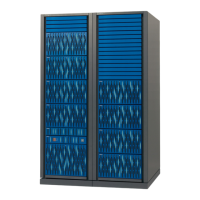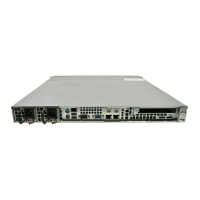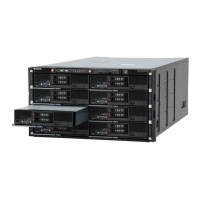#dev_group dev_name port# TargetID
LU# MU#
# /dev/rdsk/c57t4d1 SER = 62500 LDEV = 257 [ FIBRE FCTBL
= 4 ]
ORA ORA_000 CL2-D-1 4
1 0
# /dev/rdsk/c57t4d2 SER = 62500 LDEV = 258 [ FIBRE FCTBL
= 4 ]
ORA ORA_001 CL2-D-1 4
2 0
• inqraid -fg
# ls /dev/rdsk/c57* | ./inqraid -CLI -fg
DEVICE_FILE PORT SERIAL LDEV CTG H/M/12 SSID R:Group
PRODUCT_ID
c57t4d0 CL2-D-1 62500 256 - - - -
OPEN-3-CVS-CM
c57t4d1 CL2-D-1 62500 257 - s/P/ss 0005 1:01-02
OPEN-3-CVS
c57t4d2 CL2-D-1 62500 258 - s/P/ss 0005 1:01-02
OPEN-3-CVS
Using CCI SLPR security
The Virtual Partition Manager feature of the RAID storage systems (USP V/VM
and TagmaStore USP/TagmaStore NSC) supports storage logical partitioning
(SLPR), a feature that partitions the ports and volumes of the RAID storage
system. If CCI does not have SLPR security, then it can operate the target
volumes crossing SLPR through the command device. The purpose of CCI
SLPR security is to prevent CCI from operating the volumes on another SLPR
(SLPR#N) through the command device from the SLPR (SLPR#M) that is
assigned to its Host. You can use CCI SLPR Security by defining the command
device through the Virtual Partition Manager feature, so that CCI can protect
the target volume.
The following example represents the SLPR protection facility.
8-16
Examples of using CCI commands
Command Control Interface User and Reference Guide

